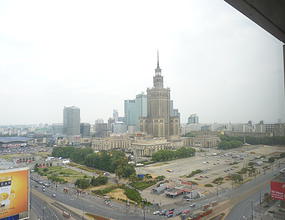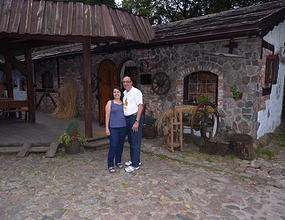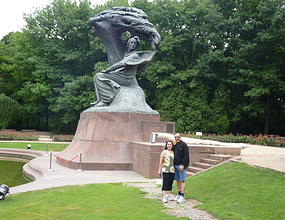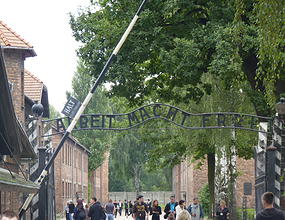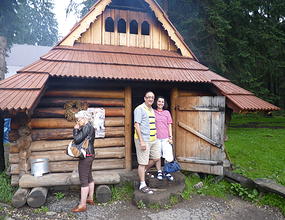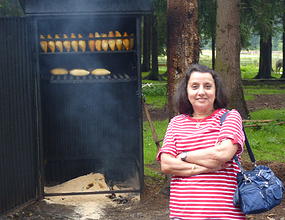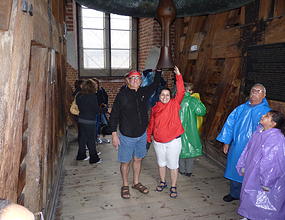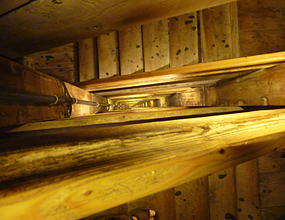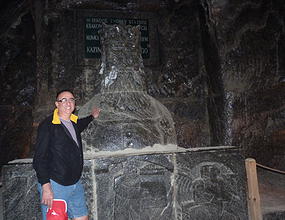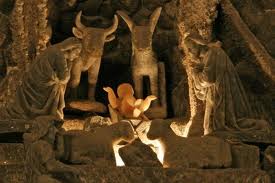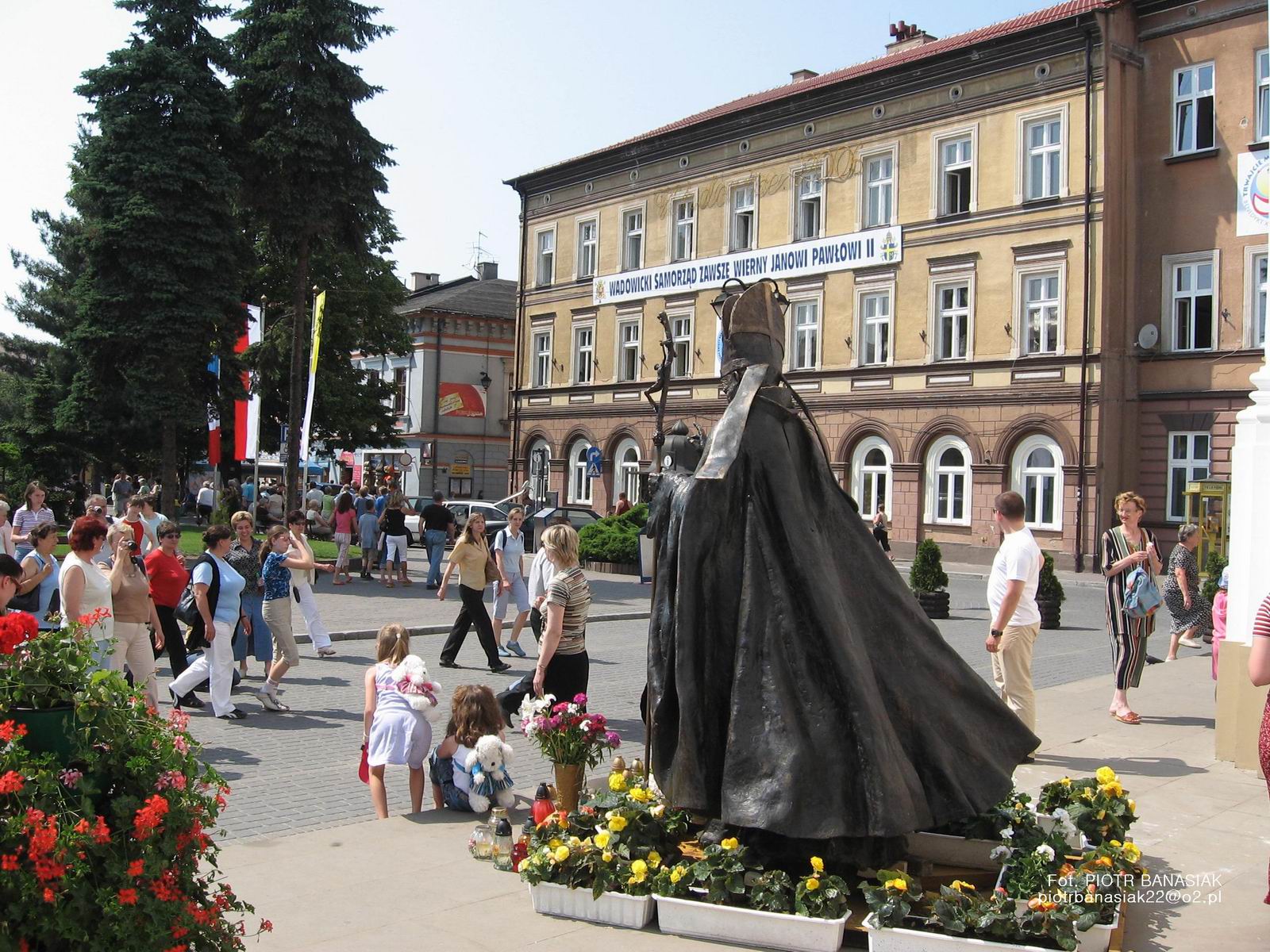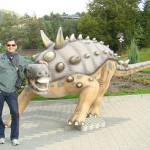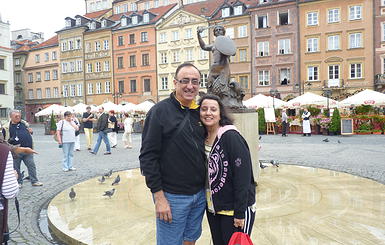
Vispi Mistry
POLISH POLKA – 24th to 30th July 2010
For a nation that has been ravaged ,pilloried and plundered by its neighbours in the best part of its 1000 years existence, Poland comes across as a country of people with remarkable resilience and never say die spirit.
It is in just under the last few decades that Poland has been unshackled from all its neighbours and is now a truly independent republic, taking giant strides towards economic , social and political soveriegnity. This piece is not on any of the above subjects but my personal experience as a first time tourist to Poland.
WARSAW the capital gets its name from the legend of WARS and SAWA, brothers who supposedly lived on the banks of the river Vistula which ran through Warsaw back in the 10th century. Warsaw became Poland s’s capital only in 1596 when King Zygmunt III took up residence in Warsaw Castle, after a fire in Wawell Hill in Krakow; the then capital. The first half of the 17th century was a period of great development for Warsaw, the town attracted merchants, artisans and builders. King Zygmunts statue still stands towering on a pedestal in the royal town square,opposite the Royal Castle overlooking the entire area.
Warsaw the city was completely destroyed to the ground by the Germans towards the end of World War II when it became obvious to them that they were on the losing side. On January 17th 1945 the city was finally liberated from the draconian Germans, but Poland still had to endure almost half a century of communist U.S.S.R rule before attaining complete independence. But under the communist regime unprecedented reconstruction began, particularly great efforts were put into the reconstruction of heritage architecture and side by side the modern development of the cities.
The imposing communist building, Palace of Culture and Science is another overbearing reminder to the Warsovians of the communist rule they had to endure. As in most European cities, the Town square is the focal point of tourist attraction and it is the same in Warsaw with its beautiful mermaid statue. A walk through the old town square with its quaint colourful red roofed buildings clinging to each other, and the cobble stoned alleys leading into it with with delightful shops selling artefacts. Horse drawn carriages rumbling through the streets browsing the stalls setup in the square has to be on the agenda for all tourists especially us Indians.
Frederic Chopin, the great Polish composer of the 19th century was born in a village on the outskirts of Warsaw. The Chopin memorial in Warsaw is a major tourist attraction & The Wilanow Palace is also a not to be missed item on every tourist itinerary.
Three days in this bustling city of over 1.7 million people are not enough to do it justice. I must mention our beautiful well groomed tour escort, Elizabeth who spoke flawless English although being Polish.Leaving Warsaw we drove to Czestochawa the small town which is the home of the Jasna Gora Monastery with the country’s national shrine and the holy picture of the world famous Black Madonna the virgin Mother. Our group was very fortunate to be there in time for the days main Mass and our guide a sprightly old Nun with a remarkable spring in her step, took us thru a back door, right in front of the altar and we heard the whole mass accompanied by the church organ albeit in Polish. It is said so rightly that faith has no language. The sonorous recitation of the mass bought tears to our eyes and goose bumps on our skin. I was told that millions of faithful come from all over the world to pay their respects and their gratitude for granted wishes. Many have become life long devotees of the miraculous statue of our Lady of Jasna Gora.
Leaving behind this wonderful religious monument after profusely thanking our guide the blessed old Nun,we drove on to Auschiwitz. The main reason for my trip to Poland was to see this concentration camp ,where the greatest butcher known to mankind , Adolf Hitler, exterminated more than 6 million human beings. It was a sombre and chilling sight even after six decades to walk through the various rooms and see chambers full of human hair, suitcases, spectacles, shoes and other belongings of the poor victims kept there as stark reminders of what man can do to his fellow men. A visit to the Gas chambers where the actual extermination was carried out was too much for the weak stomached in our group. For some consolation we were also shown the Pole on which Rudolph Hess the commandant of the camp was hung after the War. The Polish name for the town is Oswiecim. From this ‘Death Factory” we drove on to Zakopane arriving there late night.
Opening the curtains the following morning, lo and behold was the best view we have seen from a hotel window. The countryside, a green carpet dotted with tiny cottages and the snow capped Tantra mountains made famous by the Hindi movie Fanaa in the background. This town is a tourists delight, a pedestrian plaza dotted with quaint shops and cafes to loiter around and also a town market right from the middle ages selling the most beautiful picture frames and wall carvings. Leaving Zakopane behind we drove on to the second most famous town in Poland, Krakow or Cracow.
The existence of a permanent human settlement within the borders of today’s Krakow is estimated to be 5000 years old. Traces of the oldest human dwellings are to be found in Wavell, the hill, where there used to exist a stronghold later superseded by the royal castle. The oldest mention of Cracow comes in the 10th century . The name of the town is inscribed in the Arabic alphabet by a Spanish merchant Ibrahim ibn Yakub , those were the days when Spain was under siege from the Arabs. At the top of the Wavell hill there used to be a cathedral and a town built in stone and woodwork surrounded by a rampart.The towns rapid development began under the reign of King Casimir the Great who also founded the Cracow university.His Grand daughter Jadwiga gave all her jewellery for the purpose of refurbishing the university and by marrying the duke of Lithuania she started a new dynasty on the Polish throne. The rule of this dynasty, known as the Jagiellon was a time of military might and material prosperity for Poland and Cracow. The Cracow academy flourished during the late middle ages and attracted students from all over Europe the most famous being the Dutch astronomer Nicholas Copernicus. The two landmark structures of Krakow are the Cloth marker standing in the town square since the last 600 years and till date doing flourishing textile trade. The other being the magnificent St Marys Church. Its interiors hold the most valuable treasure of sculpture in medieval Europe, the Altar piece of Veit Stross. Dating back to the 16th century the Polyptych is made of limewood and consists of a main part and four wings, two of which are visible after the altarpiece is closed. The central scene at the lower part presents the Holy Virgin Mary’s dormation surrounded by large scale figures of the apostles .The Archbishop of Cracow, Cardinal Karol Wojtyla became the Pope John Paul II. No narration of Cracow would be complete without the story of the Bugler of the St. Mary’s Cathedral.
Every full hour a golden trumpet shows above Krakow’s central Grand Square in the west window just below the spire of the higher tower of the Basilica of the Virgin Mary. Then a characteristic signal trumpet melody,known and dear to every Pole, resounds all over the city’s Old Town historical district. Next the same bugle call is played towards the east, the south and the north. At noon the whole ritual is broadcast on the Polish national radio. St. Mary’s bugle call and trumpeter from Krakow. The Krakow signal bugle call, or Hejnal Mariacki, dates back to the Middle Ages when it was announcing the opening and the closing of the city gates. The bugler also played it to alarm his fellow citizens whenever he saw a fire or the enemy forces.And the melody abrupt ending is said to commemorate a trumpeter from Krakow who was shot through his throat by a Tatar archer in 1241 when the Mongols besieged the city. After lunch we visited another major tourist attraction in Poland, Wieliczka Salt mines. According to legend, salt came to Poland in the trail of the Hungarian princess Kinga, who married the prince Boleslaw Wstydliwy later the king, who gave Krakow municipal rights.The works that Kinga commissioned in Wielczka did indeed lead to the discovery of rich salt resources which from the 13th century onswards constituted a major source of income for Poland. The mine in Wieliczka was in continuous use till the 1990s. The mine is now converted into an underground museum and a part of it is also a sanatorium, which also makes use of the therapeutic qualities of the air underground created by the salt chambers.The effort required to get in and out of the mines was so great in times past that the workers used to spend a whole week underground to avoid the everyday climb of several hundred metres .Therefore the underground dwellings were provisioned with objects of everyday use. People whose lives are put at risk on an everyday basis by their occupation, often tend to turn to God. This religious devotion motivated the miners to create an unprecedented structure in the salt mine. “The Chapel of St. Kinga- a temple carved out in salt and located a few hundred metres below the earth. All decorative relics are made of salt. The salt walls ceilings and floors are illuminated by huge chandeliers. The underground tourist route going down was a compulsory 26 storey staircase whilst coming up was by elevator shafts. But there was an option of going up by stairs as well for the fitter tourists to give them a feel of the hardship in those days and I exercxised my feet a bit : It was some experience whew ! The mine is now a UNESCO World Heritage site. Truly an unbelievable experience. On the way back to Warsaw we passed through Wadowice the birthplace of Pope John Paul II. The town has taken great care of the building he was born in and has now converted it into a museum. One week is indeed too short to do justice and enjoy the sites of this great country. Rich in history,historical monuments and well endowed by nature. It certainly should figure as a must see country on every tourist’s list.

